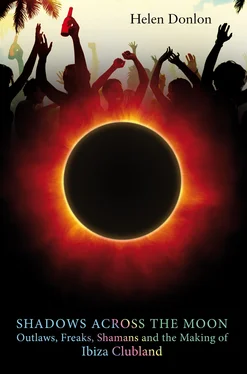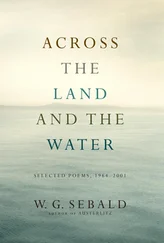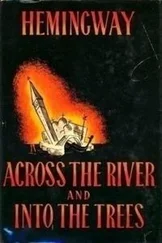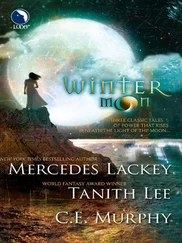When France’s Socialist leader Jean Jaurès was assassinated by the outlaw Raoul Villain, and mobilisation for what became World War I was declared in France three days later, it was to Ibiza that the runaway executioner eventually fled. The curiously-named Villain knew of the island’s reputation as a safe place for a stowaway, and with the help of artist Paul Gauguin’s grandson, he built himself a house in the then remote Cala de Sant Vicent, in the far north. Hoping to spend the rest of his days in peaceful obscurity, Villain’s luck changed rapidly when he was apprehended during the Civil War by Republican troops who found his behaviour odd, and suspected he might be a Fascist. He was convinced the soldiers were looting his precious worldly goods and had tried to defend his home, rather than taking to hiding as his neighbours had strongly advised but his verbal protests backfired horribly, and Villain was shot dead on the beach. It took him two long painful days to die, mainly because the troops had issued a severe warning to the neighbours not to help him in any way, but once he was seen to be dead, the ever hospitable Ibicencos buried him, with a French flag.
Ibiza’s evolution from a melancholic hinterland doused in the malingering murk spilled during the Civil War into a dazzling and seductive tourist zone, took a matter of only a few years once building started. The bohemian travellers, most of them artists or outlaws (and often both) had started to congregate in the island bars and take up residence in apartments around Ibiza Town, Dalt Vila and Figueretes, or in countryside fincas. At the time these were all very cheap to rent by European standards, particularly once you factored in the gloriously warm, sunny, natural and stress-free environment that was a crucial part of the package. Aside from the Migjorn and the Montesol, other bars were opening around the port, including Clive’s, run by the enigmatic charmer Clive Crocker, and the Domino bar which had become a base for the beatniks, jazz lovers and black marketeers. Then there was the Bar Alhambra next to the Montesol on Ibiza Town’s Vara de Rey, and behind the medieval walls in Ibiza’s old town, stood the Hotel El Corsario (‘the pirate’).
El Corsario was opened by one Emil Schillinger. Already the proprietor of the well known port side hostel, El Delfín Verde, Schillinger was a former Nazi who had gained social respectability on the island after sheltering the Jewish refugee art dealer Ernesto Ehrenfeld. This is an example of the island’s tacit code of immunity, which many similar stories would back up. As a further example, at the end of the Algerian war, the island took many exiles of the OAS, the country’s dissident secret army, into its bosom without any fuss.
El Corsario soon became a lively meeting place and social club for the so-called Grupo Ibiza ’59, a posse of artists including such luminaries as Erwin Bechtold and Egon Neubauer, as well as architects such as Josep Lluis Sert (who worked closely with Le Corbusier) and Erwin Broner. Errol Flynn would often stay at El Corsario, and across the early years of Ibiza’s reign as a celebrity island other paparazzi-friendly names including Aristotle Onassis, Grace Kelly, Romy Schneider, Dean Acheson, Maximilian Schell, Walter Gropius, Prince Rainier of Monaco, members of Pink Floyd and many more would add colour to the hotel’s lively and comfortable rooms. Then the proto-nightclub La Cueva de Alex Babá was opened in the mid-60s by Alejandro Vallejo-Nágera, a local man who was considered by many to be the first real Ibiza hippie. Cannabis and opium were now being consumed on the island, as was LSD. In fact many of the very first reports of successful (and otherwise) LSD trip tales anywhere were reported as happening in Ibiza.
The Irish writer and broadcaster Damien Enright lived in Ibiza and Formentera in the early 1960s, until his dreams of paradise were shattered when the woman he loved took off with someone else behind his back, and his once idyllic life came disastrously undone due to his being undermined by fair weather friends. He eventually got enthusiastically but naively embroiled in a high risk international drug running gamble which went chaotically wrong for him, and later wrote a memoir which captures both of the famous Ibiza extremes – the highest of the high and the lowest of the low. In the memoir, Dope in The Age of Innocence, he lovingly describes the Ibiza Town port side bar scene, and the exuberance and near religious fervour of the jazz lovers of his circle. That circle included Bill Hesse, the American saxophonist who would stand by the sea at the edge of Formentera and blow his saxophone passionately into the night winds, completely naked, and who, according to Enright, “had taken acid. As he put it, he had seen the man, he had seen the light. Bill lived for music. When I came back from London and told him I’d bought Coltrane’s A Love Supreme, he got up next day at dawn and crossed on the boat to Ibiza to hear it at the Domino bar. He passed by our house that evening, to tell me about it. There were almost tears in his eyes.”
The Domino bar, whose owners had a vinyl collection that included the works of Billie Holliday, Miles Davis, Chet Baker and all the jazz greats, would close at 2 a.m. Drunks would then roam meaninglessly around the port side, or sleep it off on the pavements outside the bar, or perhaps, fired by amphetamines, sit and talk till dawn as the fishing ships came in. These hours, roughly between 2 a.m. and 9 a.m., are locally known as la madrugada – the morning hours that in fact comprise the late partying hours of the day before – a phrase still used in Ibiza clubland today.
In 1963 there were still only about 37,000 inhabitants on the island, and it is estimated that even by 1965 there were only a hundred or so acknowledged foreign resident faces seen around town. Everyone knew each other, so they said, and certainly those hanging out around Dalt Vila and the port would have. On the other side of the island meanwhile, the town of Sant Antoni was slowly evolving from a quiet fishing village into a tourist area with specially built hotels to cater for the new European tastes and expectations. Aided by its stunning sunset position, and the remarkable beauty of the surrounding area, Sant Antoni’s development was the result of Franco’s main tourist drive in Ibiza, which also included the installation of a bullring (a concept totally alien to Catalan thinking) – and that bullring has in fact gone down in history as one of the first great rock ’n’ roll arenas on the island. Bob Marley played there, as did Thin Lizzy and Eric Clapton.
The French-Algerian writer and philosopher Albert Camus remarked about the scene in the harbour cafes in the mid-1930s, where he’d sit and write, or watch the world go by, “Towards five in the evening the young people would stroll back and forth along the full length of the mole; this is where marriages and the whole of life are arranged. One cannot help thinking there is a certain grandeur in beginning one’s life this way, with the whole world looking on.” The highly acclaimed British travel writer, Norman Lewis, spent time in Ibiza in the 1950s, and later wrote, “According to local gossip, in which I was soon included, the peasant women (although not the fisherfolk, who were more honourable in such matters) disposed of unwanted husbands by poisoning or other methods. A local beauty who ran a bar a few miles away was said to have got rid of hers by throwing a stick of dynamite down the well in which the man was at work.”
With its very mixed up international tribal history, the native islanders’ tolerance of outsiders and visitors couldn’t help but evolve rapidly and considerably over time. New groups of individual international settlers were accepted, and the peluts were eventually as integrated as the earlier beatnik, artist, traveller, dropout or experimental cosmonaut.
Читать дальше











